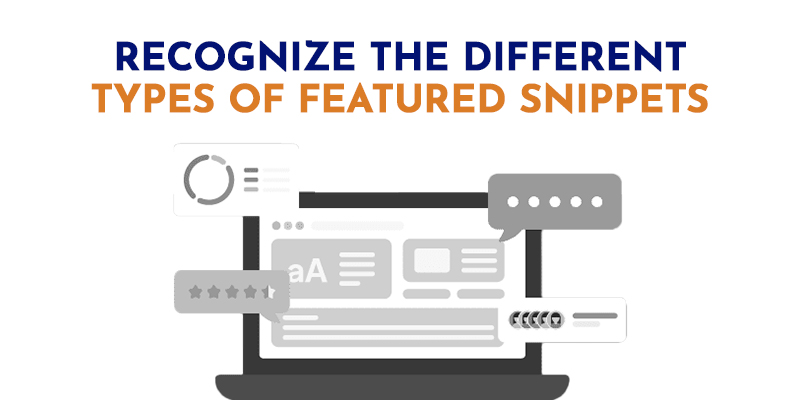In an era where information is sought at lightning speed, featured snippets have emerged as a crucial tool for content visibility. These concise answers, appearing at the top of search engine results, offer users quick solutions to their queries while benefiting content creators with increased traffic and engagement.
Understanding the intricacies of featured snippets is essential for anyone looking to enhance their online presence. From recognizing the various types to integrating effective keywords, a strategic approach can be the difference between being overlooked and standing out in search results.
This article will guide you through optimizing your content for featured snippets, covering everything from researching user intent to crafting direct answers. By applying these techniques, you can align your content with the needs of search engines and users alike, ultimately improving your rankings and visibility.
Understand what featured snippets are

Featured snippets are brief excerpts from web content a search engine selects to answer a user’s query swiftly and directly. They appear at the top of search results in a particular block, often called “position zero,” highly coveted as it precedes the first organic search listings. Common featured snippets include paragraph snippets that provide concise answers, list snippets that might appear in bulleted or unordered lists to outline steps or itemize information, and table snippets that organize data in a table format.
Understanding these snippet varieties is crucial as they cater to different search queries, aligning with the search intent behind each query. For instance, paragraph snippets typically respond to direct answer questions, while list snippets are commonly associated with step instructions. To capitalize on featured snippet opportunities, consider the user’s potential questions and optimize your content accordingly. By doing so, you can increase organic traffic to your site due to the prominence and visibility of featured snippets as a search feature in Google’s answer boxes.
Recognize the different types of featured snippets

Recognizing the different types of featured snippets is crucial for optimizing your content to increase its chances of appearing in these prime positions on search engine results pages (SERPs). Featured snippets offer concise answers to search queries directly on the SERP, enhancing visibility and driving more organic traffic to your site.
Common types of featured snippets include:
- Paragraph snippets: A block of text providing quick answers to direct question queries. For instance, explaining “What is SEO?”.
- List snippets: These can be ordered with step-by-step instructions or unordered lists. They are ideal for how-to guides or item lists.
- Table snippets: Data is organized in a table format, which helps present comparisons or schedules.
Additionally, you might encounter:
- Rich snippets: Enhanced results, including images, review ratings, or other interactive elements.
- Video snippets: A video that provides a visual answer to search queries.
Understanding the type of snippet opportunity suitable for your target keywords allows you to tailor your content structure and provide straightforward answers that are more likely to be featured. Use keyword research tools to find long-tail keywords that trigger snippet opportunities in traditional search and focus on delivering clear, concise answers or step-by-step guidance in your piece of content.
Research user intent behind queries
Understanding user intent behind search queries is crucial for optimizing content for featured snippets. Users often turn to search engines seeking quick answers to specific questions. To harness this behavior, start by identifying common types of search intent—informational, navigational, transactional, or investigative.
Informational queries typically involve users wanting concise answers or explanations; thus, creating content that provides direct answers is key. Paragraph snippets, often in the form of a short, standalone piece of content, are highly suitable for these.
Navigational queries occur when users look for a particular webpage or resource. They are less likely to yield featured snippets, as users expect direct site links.
Transactional queries imply readiness to complete an action, purchase, or engage with a service. While ranking these queries with featured snippets is more challenging, providing clear step-by-step instructions or lists can help.
Investigative queries are a mix of questions users can compare or research before deciding. Table snippets showcasing comparisons or data can be compelling.
Use keyword research tools to pinpoint long-tail keywords that align with these search intents. By understanding and matching user intent with the appropriate content format—paragraphs, lists, or tables—you could significantly increase your chances of securing featured snippet opportunities.
Utilize long-tail keywords for better targeting

Incorporating long-tail keywords can be a strategic move to target featured snippets effectively. These specific, often lengthier search queries cater to more refined user intentions, making them valuable for niche targeting. Notably, long-tail keywords typically face less competition but can generate significant organic traffic due to their precise nature.
When optimizing content, conduct thorough research using keyword research tools to identify relevant long-tail phrases aligned with your target keywords. These should mirror the natural language and questions potential users might input into a search engine.
Craft content that provides straightforward answers to these long-tail queries. Aim to answer directly within the first paragraph to increase the likelihood of capturing paragraph snippets. Bulleted lists and numbered step instructions can be formatted as unordered lists or ordered lists, generating potential list snippets. Presenting data in a table format might also capture table snippets.
Remember, featured snippet opportunities are not just about the keyword itself but about how well the content satisfies the user’s search intent with concise answers. High-quality, well-structured, and informative content stands a greater chance of earning that coveted spot in a search feature’s answer boxes.
To summarize, use long-tail keywords to:
- Target specific searches.
- Provide direct answers.
- Format content in lists and tables for snippet opportunities.
Structure content using clear headings and subheadings
Structure your content using headings and subheadings to enhance its chance of appearing in featured snippets. Clear headings guide search engines through a piece of content, signaling essential topics that may align with search queries. Utilize H1 for your main title, with H2s and H3s for distinct subtopics, creating a well-organized layout. This hierarchy makes it easy for search engines to identify the precise snippets that provide quick answers to users.
Subheadings should encapsulate the section’s content, using target keywords when appropriate. This can draw the search engine’s attention to the relevant section for specific search queries, potentially positioning your content in the desired answer boxes.
Craft concise and direct answers to common questions
Crafting concise and direct answers to common questions is essential for catching the attention of both users and search engines. When users input search queries, they are often looking for quick answers. To optimize for this, one must provide straightforward answers that directly address the query.
Common direct answers that can appear in search results include paragraph snippets, which are short blocks of text; list snippets, often in bulleted or unordered lists; and table snippets, which display data in a table format.
For best results:
- Identify frequent questions in your field using keyword research tools.
- Structure your content to answer these questions clearly and succinctly.
- Format your answers in easy-to-digest sections, possibly using step instructions where applicable.
By offering direct responses in a format aligned with the search intent, content creators can increase their chances of appearing in answer boxes, leading to higher visibility and potentially more organic traffic.
Use bullet points and numbered lists where applicable
Bullet points and numbered lists are vital formatting tools when optimizing content for featured snippets. These formats break down information into more digestible chunks, which search engines might favor for specific search queries.
When a user asks a search engine for step instructions or a list of items, content organized in bullet or numbered lists can appear directly in answer boxes, providing quick answers from the organic search results. Search engines often pull from content formatted in easily identifiable lists for list snippets.
To maximize featured snippet opportunities:
- Use bulleted lists to outline key points or features.
- Choose numbered lists for step-by-step guides or when order is important.
- Ensure lists are concise, offering straightforward answers to search intent.
- Place lists near the top of your piece of content to enhance visibility.
By employing these formatting styles, you are aiding readability for your audience and signaling to search engines the potential suitability of your content for featured snippets, ultimately improving chances of boosting organic traffic.
Incorporate tables for data-driven content
Incorporating tables into your data-driven content can enhance readability and comprehension for your audience. When presenting complex data or comparisons, tables allow readers to grasp the information quickly, facilitating a better understanding of the points you’re conveying. A well-organized table can compare elements side-by-side, showcase sequences, or categorize information for quick reference.
Create engaging video snippets to enhance visibility
Engaging video snippets are potent tools to enhance visibility in search engine results. Creating compelling video content starts with understanding search intent. Focus on long-tail keywords that reflect common search queries relevant to your target audience. This approach increases the likelihood that your video appears as a direct answer in search feature snippet opportunities.
When you produce a video, consider that Google may select a segment for a video snippet. To do this effectively, your video should offer concise answers to specific questions, much like paragraph snippets. Incorporate clear visuals and step instructions where applicable, as these could be presented in bullet lists or unordered lists within video snippets.
Keyword research tools are invaluable for identifying target keywords. Use this data to script your video with straightforward answers directly addressing those search terms. Organic traffic can grow substantially when your content aligns closely with the search queries and offers quick answers.
Remember that while engaging video snippets can boost your content in traditional search results, their ultimate goal is to provide users with the richest possible experience directly within the answer boxes. Keep your answers clear, concise, and formatted in a way that anticipates snippet opportunities in the organic search landscape.
Conduct keyword research to identify snippet opportunities
Conducting keyword research is a fundamental step in optimizing content for featured snippets. To identify snippet opportunities, start by utilizing keyword research tools. These tools help discover long-tail keywords, which often align closely with specific search queries. Users who input detailed search terms typically seek quick answers to their questions.
Analyze existing featured snippets for insights
Analyzing existing snippets for insights is crucial to optimize your content for featured snippets. Start by identifying common types of featured snippets, which include paragraph snippets providing concise answers, list snippets that present step instructions or bulleted lists, and table snippets that organize data in a table format. Also, take note of video snippets for visual step-by-step or quick answers.
Conduct search queries relevant to your target keywords to see which snippets appear. Keyword research tools can help discern long-tail keywords with snippet opportunities. When analyzing snippets, note the content format that triggers the search engine to feature it. This could be ordered or unordered lists, a well-structured table, or straightforward answers in paragraph form.
Look at the search intent behind the search term and see how the featured snippet addresses it. This can provide hints on tailoring your content to meet similar needs. Additionally, assessing the length and style of the content can suggest how to create content that succinctly provides direct answers that users seek in organic search results.
By understanding the existing featured snippets in your industry, you can find rich snippet opportunities and learn how to structure your content effectively for targeted search features.
Optimize content for voice search
Optimizing content for voice search is vital to ensure visibility in search engine results, as voice searches typically yield a single direct answer. To enhance the chances of being featured in such answer boxes, use these tips:
- Target Long-Tail Keywords: Voice queries often involve natural, conversational language. Incorporate long-tail keywords that reflect how people speak rather than type.
- Focus on Question Phrases: Since voice searches commonly start with who, what, where, when, why, or how, structure content to answer these questions.
- Provide Concise Answers: Aim for straightforward answers that are brief yet informative. This increases the chance that search engines will pull your content into answer boxes or featured snippets.
- Utilize Lists and Table Format: Formatting content in bulleted or unordered lists and tables can help highlight key points, making the information easily digestible for quick answers and snippet opportunities.
- Optimize for Local Search: Many voice searches are for local information. To meet the search intent of these queries, include relevant place names and local information.
Remember to structure content clearly and logically. Rich snippets often pull from well-organized pieces of content that directly address specific search queries in a user-friendly manner.
Focus on high-quality, informative content creation
High-quality, informative content creation is integral to optimizing for featured snippets. Search engines prioritize content that directly answers search queries. Crafting concise answers to common questions within your content can lead to snippet opportunities.
Employ a structure that search engines can quickly parse, such as bulleted lists for list snippets or a table format for table snippets. Utilize headings to signal the beginning of an answer to a search term, making content organization clear to readers and search engine algorithms.
When creating content, aim for straightforward answers that align with search intent. These are often lifted directly into paragraph snippets or answer boxes. Traditional search results can transform into quick answers, significantly increasing organic traffic to your site.
Remember, content that provides step instructions for how-to queries or answers beginning with “What is” and “How do” is especially conducive to featured snippets. Use keyword research tools to include long-tail keywords that match these information-seeking search queries. Lastly, ensure your content offers value and relevance to maintain high organic search rankings.
